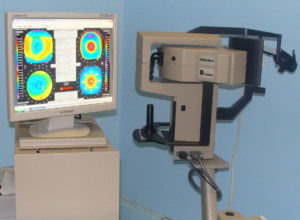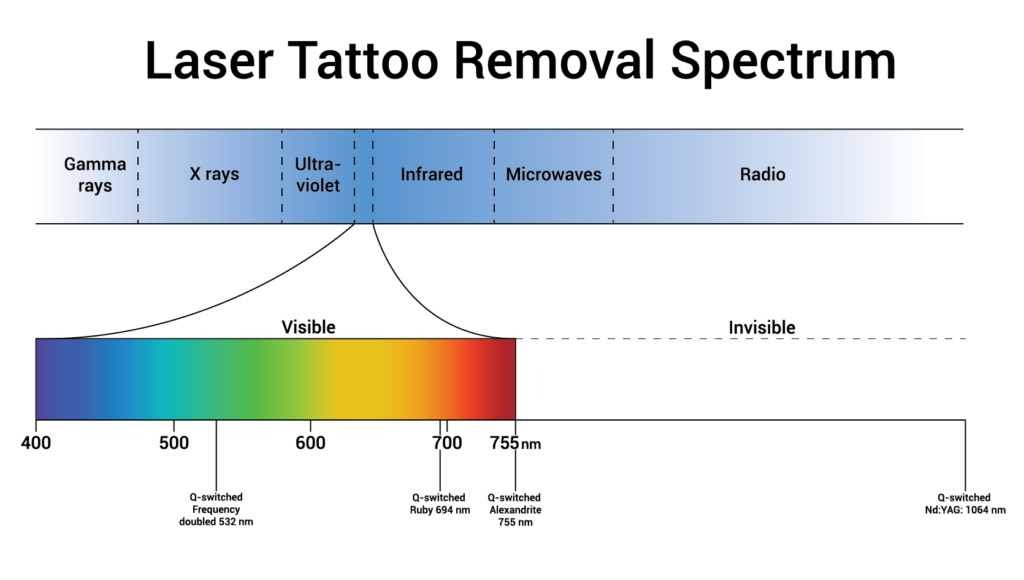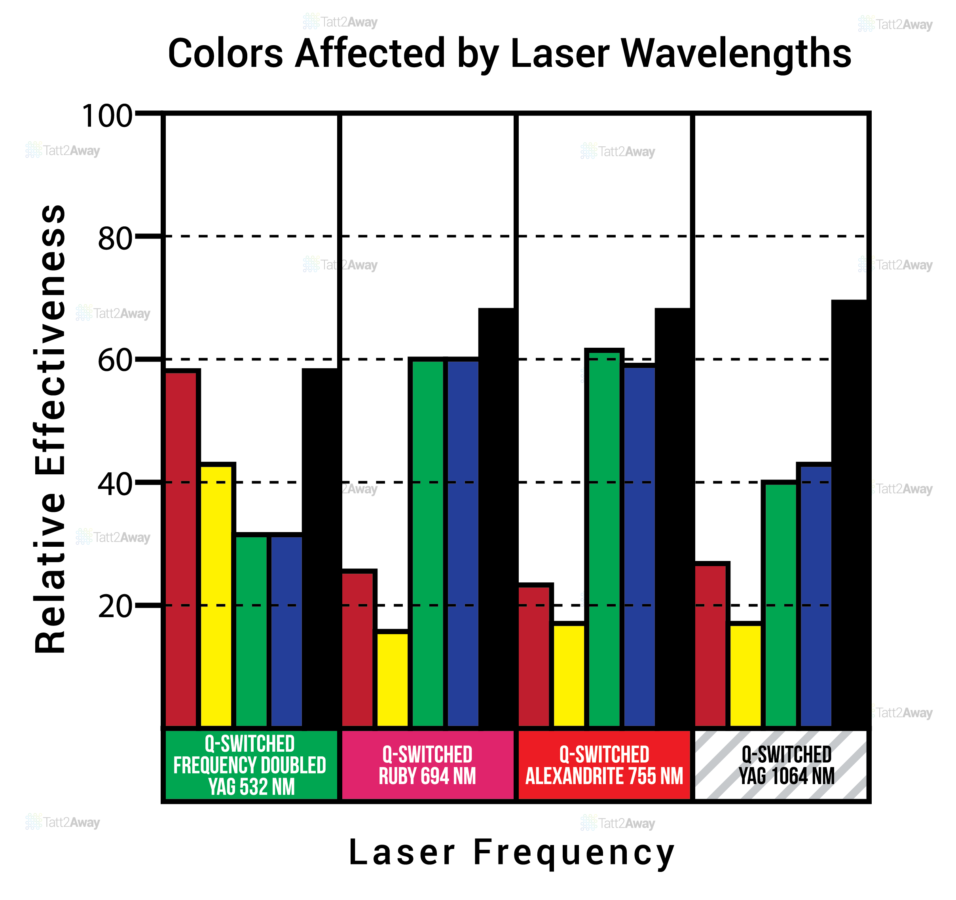More is not always better. Laser, which has been the most common tattoo removal for decades, requires a substantial number of treatments to have even a moderate effect. And therein lies the problem that not even increasingly advanced technology can address: if a given color requires a specific wavelength to be eradicated, and if each color requires multiple treatments, what does that mean for a tattoo with multiple colors?
Jack Savage, CEO of Rejuvatek Medical, Inc., has not only been intimately familiar with lasers since the early 1980s, but through them he’s had a significant effect on people’s vision worldwide. Twice. Savage’s first revolutionary contribution was an enhanced method of endophotocoagulation that provided a way to stop retinal bleeding. The second was Orbscan, corneal topography mapping for Lasik surgery. Savage’s company, Orbtek, was purchased in 1999 by Bausch & Lomb, who still uses the original technology in their Lasik vision centers.
Rejuvatek Medical is the parent company of Tatt2Away®, an all-natural form of tattoo removal that does not involve lasers. And it’s Savage’s extreme degree of expertise with lasers that is the reason Tatt2Away has nothing to do with them. “Tatt2Away solves a lot of issues that lasers don’t address,” he said. “It works on all colors; laser doesn’t. It works in fewer treatments, which is less disruptive to the dermis. It’s less painful, and because it takes fewer treatments, less expensive.”
Color-Centric Tattoo Removal
The primary limitation of laser tattoo removal stems from the method being color dependent, which Tatt2Away is not. With the exception of black, which is minimally reflective and so absorbs at all wavelengths, each color is absorbed by a different wavelength, thus different wavelengths for different colors. The second limitation is the need for multiple treatments per color. Do the math.
As Savage said, that’s the real difficulty of using laser to remove tattoos. “To remove one color you have to go over the skin as many as six to ten times, and then you’ll have to use another wavelength and go back over that same area yet another six or more times to get the next color,” he said. “Now you’ve exposed the skin to all of those laser treatments and that still doesn’t assure you’re going to get whatever the residual color is, so you may still have ghosting or pigment remaining in the area.”
For those with a solid black tattoo, laser is painfully inconvenient at best. But those with tattoos of multiple colors are stuck between the proverbial rock and a hard place. Either they can endure multiple treatments with multiple wavelengths to address each color, or they can decide which colors are the ones that need to go. The first option means possibly thousands of dollars, years of time, and depending on the equipment and technician, damaged to severely damaged skin. The second option, for those desiring full removal, is no option at all.
This also assumes that each color is pure rather than a blend. As Savage said, “Depending on the various colors of ink in a piece, how those colors might be layered, and assuming that black is really black and not dark blue for instance, the mechanism of action doesn’t do what it’s supposed to.” In other words, “If you don’t get enough absorbed by the laser wavelength into the pigment, then it will not thermally overload it enough to break it into smaller particles to be absorbed into the body.”
Ebay has Q-switch lasers available for under $1,000, although these aren’t the ones in hospitals, clinics, or med spas. And while more updated, advanced, non-ebay versions of Q-switch lasers are still prevalent in many credible institutions; the type of machine, its age and efficacy, and the technician’s training and skill – or lack thereof – should raise a question about those $60-per-treatment, pop-up laser centers or have-laser-will-travel technicians.
Differences in Laser Types: Q-Switch vs PicoSure
Q-switch lasers pulse varying wavelengths of light in nanosecond ranges, breaking down the scar tissue containing pigment particles and releasing them into the skin. They use photothermal action, or heat, for delivery. Zapatat in Richmond, VA, is one of the thousands of Q-switch laser facilities around the country. Like the others, it’s required to operate under physician supervision.
Manager Nadia Pryadilova believes the Q-switch to be the best method despite its limitations. “It completely removes red and black, but green and blue are not guaranteed to be removed. No one can guarantee their removal, but we’ll lighten them as much as possible.” Pryadilova said the number of treatments depends on the client and the tattoo, and vary from five to fifteen, standard for any laser removal.
Newer, more advanced, and more expensive, is PicoSure. PicoSure describes their product as a non-heat laser that uses “pressure wave technology” to deliver the energy in trillionths of a second, rather than billionths. This means less pain and fewer treatments than older, less expensive lasers. Bye Bye Ink in Memphis, TN, and UntattooU in Vienna, VA, are two of a growing number of facilities using PicoSure. PicoSure’s website says it is effective on “previously treated tattoos that failed to clear, even stubborn blue and green inks.”
Morgan West, Marketing Director for Bye Bye Ink, sees vast differences. “Q-switch lasers use a slower rate of energy so there are still blotches of ink. It also harms healthy tissue around the tattoo, so some will scar. PicoSure leaves healthy tissue healthy.”
The Non-Laser Alternative: Tatt2Away
No matter how advanced the laser technology, how minimal the pain, the essential problem of color-centric removal is still present. “It still doesn’t overcome the fundamental physics involved,” Savage said. “If a color isn’t well absorbed by a particular laser wavelength, you’re not going to get the effect you’re looking for.” Savage says that Tatt2Away’s experience – sizeable and growing, with over 60 centers in the US since early 2015 – people using the new laser technology are still finding it takes a lot of treatments, costs a lot of money, and however much it has faded, the tattoo is still there.
South Vineland Firehouse Tattoo in Vineland, NJ, recently became a Tatt2Away center. Marcy Letizia, co-owner with her husband, said her fifth client was someone who’d had laser removal 14 times. “It was incredible, because he said he’d spent over $9,000 so far and you could still see this huge tattoo of this face on his forearm.” She’s finished one treatment on him and said it worked. “He has these little red pinkish spots everywhere, and the ink came out in all the spots that I treated,” she said. “He’s ecstatic.”
Laser tattoo removal has been on the market for decades now, enough time to prove that it’s just not that effective in many cases. The difference is in the fundamental method of each. Said Savage, “Lasers are color-centric. They’re based on pigment colors and wavelengths. Our approach is not reliant on any of that, because we’re eschar-centric, meaning our technique does not care what color or type of pigment is used.”
He compares the market’s desire for a solution to wanting a magic wand, noting that because of the myriads of factors involved, it’s not that simple. “You have this ink, and you want to be rid of it so you wave something over it, and then it’s gone. But the reality is that the act of getting a tattoo, how the ink was put in, is very dependent on the artist, their style, and their technique.” And then there’s the complication of different colors of ink, and sometimes multiple coverups, which perhaps means multiple artists applying yet more ink of different compositions and consistencies. Add in skin type, age of the tattoo, health and healing variables and it’s staggering to realize that some laser treatments are actually considered successful.
“Tattoo removal is not a simple process, but our approach is as simple as you can make it,” said Savage. “Once you switch from being eschar-centric to some other approach where you’re depending on the colors, it becomes infinitely more complicated in terms of trying to get it off. It seems like a simple thing but in reality, particularly when you’re pigment-centric, it’s infinitely complicated.”




